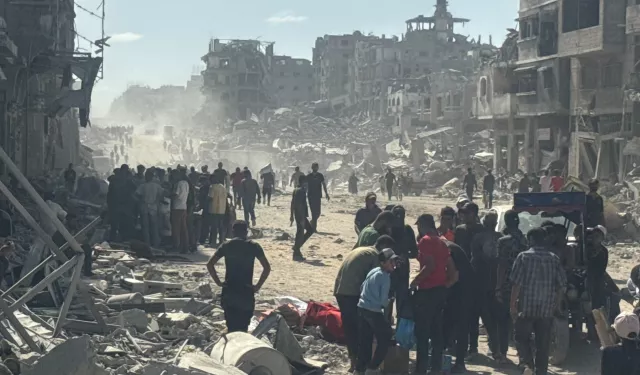Hamas has accused the Israeli military of systematically violating the current ceasefire agreement in Gaza, escalating military operations, reinforcing the blockade, and obstructing the flow of humanitarian and relief supplies into the besieged enclave.
In a statement released Monday via Telegram, the group held the Israeli occupation army “fully responsible” for the deepening humanitarian crisis in Gaza. It called on “the free people of the world” to sustain pressure on Israel and its allies “to stop the attacks, end the siege, and open the crossings.”
The statement described conditions in Gaza as catastrophic and rapidly deteriorating after nearly two years of what it termed a genocidal war. Hamas pointed to acute shortages of food, medicine, clean water, tents, and other basic shelter supplies, alongside the collapse of the health system. It warned that these factors pose an existential threat to the civilian population—particularly women and children—now exposed to harsh winter conditions without adequate protection.
The group urged countries serving as guarantors of the ceasefire to intensify pressure on Israel to honor its commitments under the humanitarian protocol. In particular, it called for the reopening of the Rafah crossing to facilitate the delivery of aid, shelter materials, and the movement of patients and civilians in both directions.
Hamas further warned that continued international silence in the face of what it described as “ongoing fascist occupation crimes” would only exacerbate the suffering of more than two million Palestinians deprived of the bare essentials for survival. It described the situation as a worsening humanitarian catastrophe made more perilous by what it sees as global inaction.
A divided Gaza?
The warning comes amid rising tensions over an emerging US plan that envisions dividing Gaza into two administrative zones—a “green zone” under joint Israeli and international military supervision where reconstruction would begin, and a “red zone” that remains devastated and largely uninhabitable.
Meanwhile, Israeli National Security Minister Itamar Ben Gvir reaffirmed his own position, denying Palestinian nationhood and calling the people of Palestine an “invention.”
Despite the escalating violence, on Friday, the United States and several regional partners—including Egypt, Qatar, Saudi Arabia, the UAE, Turkey, Jordan, Pakistan, and Indonesia—issued a joint statement urging swift adoption of a US-drafted Security Council resolution.
The resolution is positioned as a roadmap to peace and long-term stability for both Palestinians and Israelis, though its content leans heavily toward Israeli policy preferences.
Hamas, for its part, is lobbying Russia and China to exercise their veto powers at the Security Council in order to block the resolution’s passage.
A test for the Trump doctrine
The resolution, set to be discussed at the Security Council today, reflects the Trump administration’s broader Middle East doctrine. While the Trump administration has not formally rejected the two-state solution, it has consistently undermined it, advocating expanded Israeli control and rebranding Gaza as a potential “Middle Eastern Riviera.”
The American draft resolution aligns closely with the Israeli government’s long-standing refusal to recognize Palestinian statehood based on 1967 borders, as outlined in UN Resolution 242.
The draft, according to a version seen by AFP, calls for establishing an international “Board of Peace” to act as a transitional governing body in Gaza through 2027.
It also proposes deploying an “International Stabilization Force” that would coordinate with Israel, Egypt, and a newly trained Palestinian police force to secure borders and oversee disarmament efforts.
While proponents of the plan describe it as a good-faith effort to chart a new political course, its detractors see it as entrenching a status quo of occupation and fragmentation.
Uncertain diplomatic horizon
The upcoming Security Council vote marks a critical juncture for the Trump peace plan and the international community’s approach to Gaza. With Russia expected to challenge key provisions of the resolution—and possibly veto it outright—the outcome remains highly uncertain.
What is clear, however, is that Gaza’s future is being shaped by overlapping political agendas, from the Trump administration’s endorsement of its predecessor’s framework to Hamas’s insistence on maintaining armed resistance. Israel’s refusal to allow Palestinian self-governance under any faction it deems hostile.
As the humanitarian crisis worsens, and reconstruction remains tied to geopolitical bargaining, the coming weeks could define not only Gaza’s next phase but also the international order’s capacity, or failure, to prevent further descent into protracted instability.
